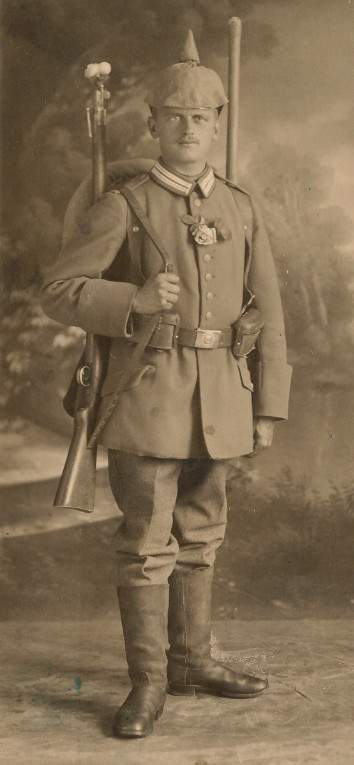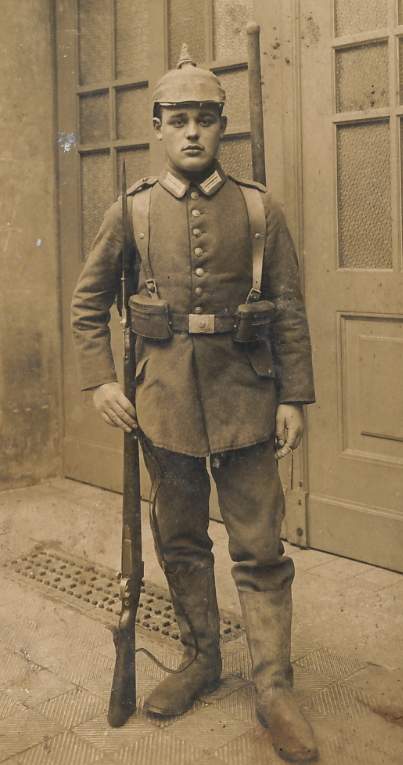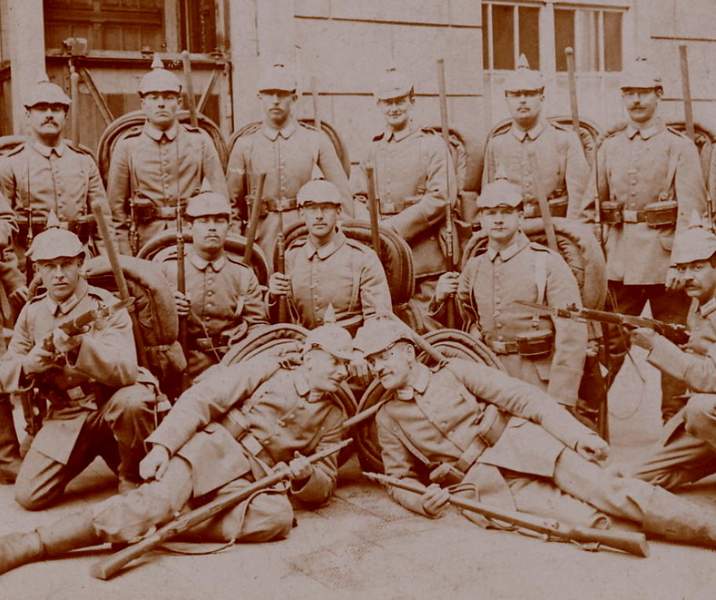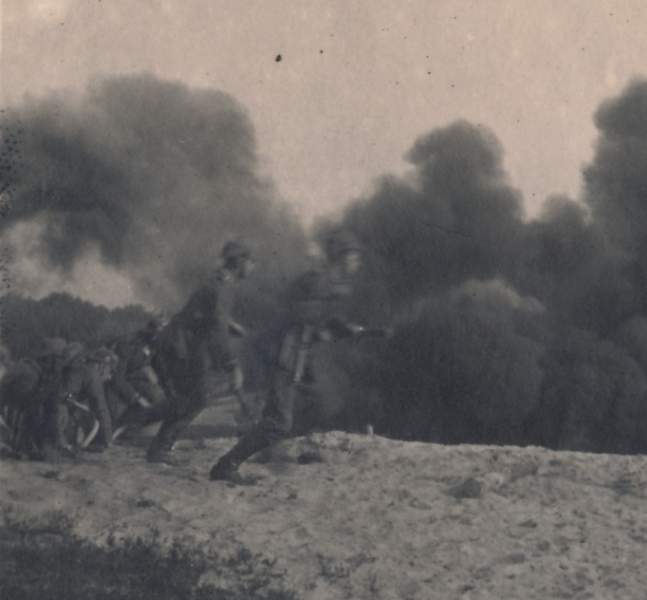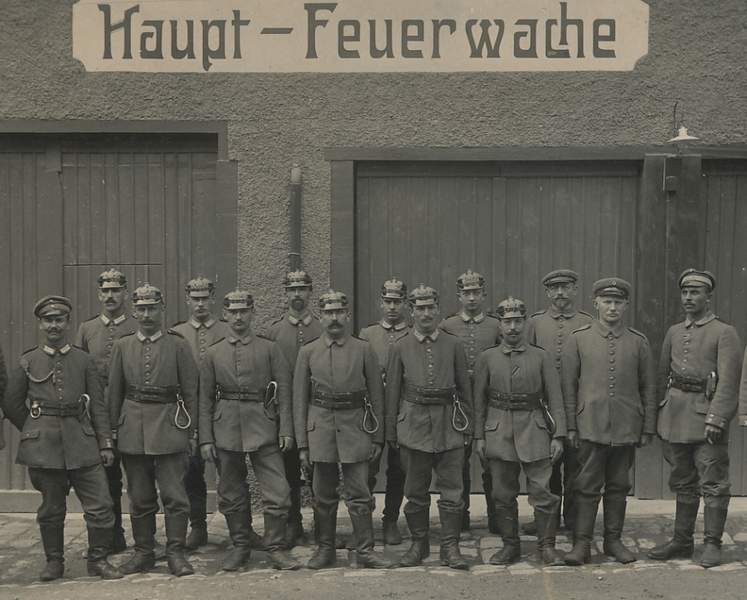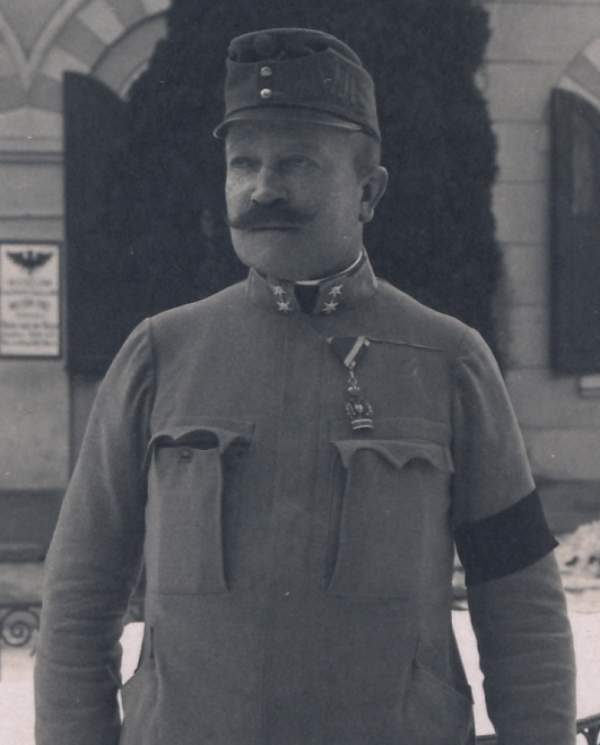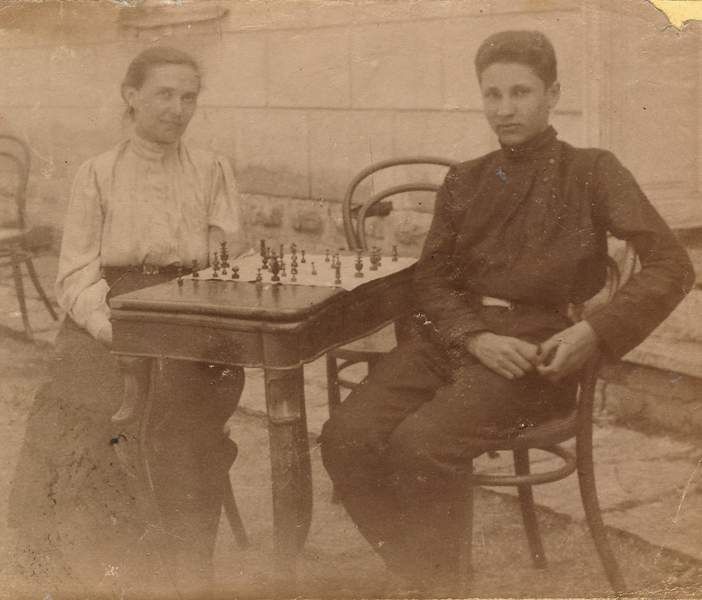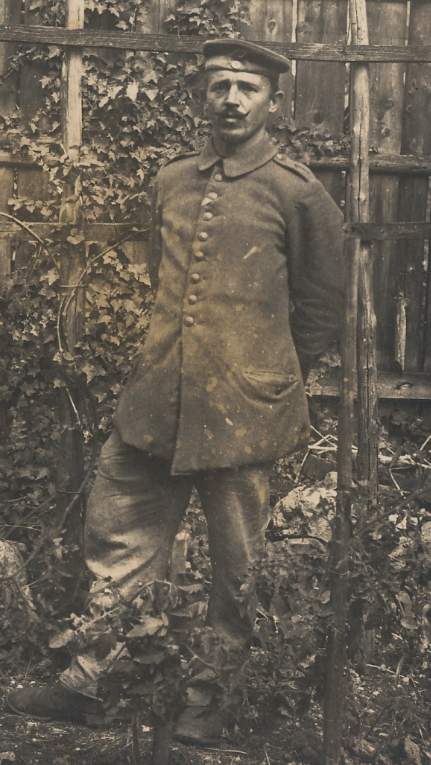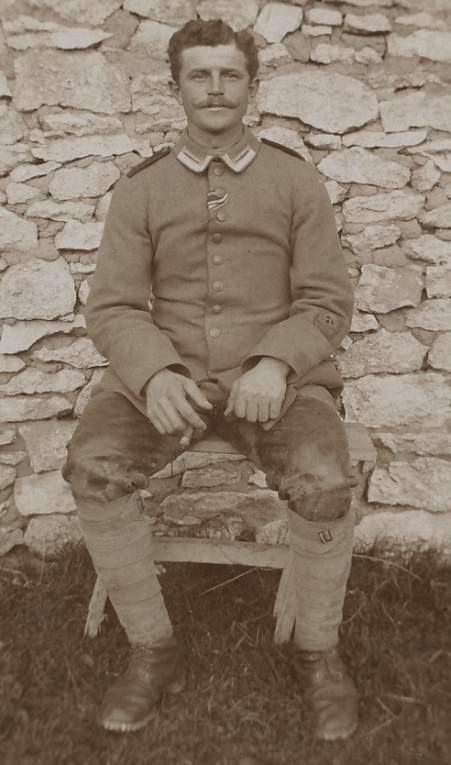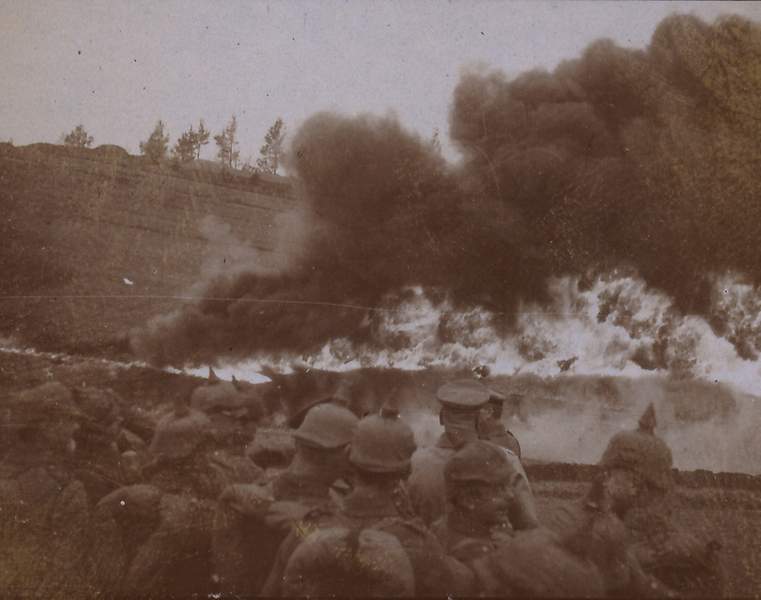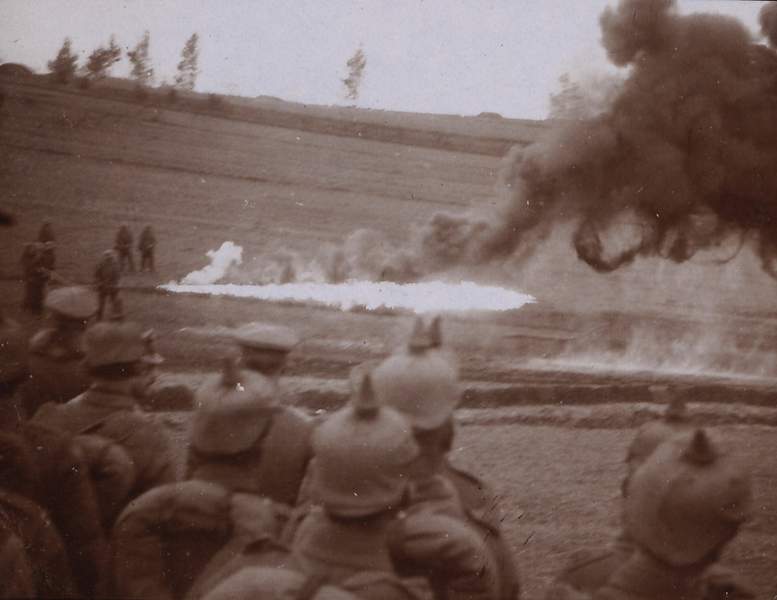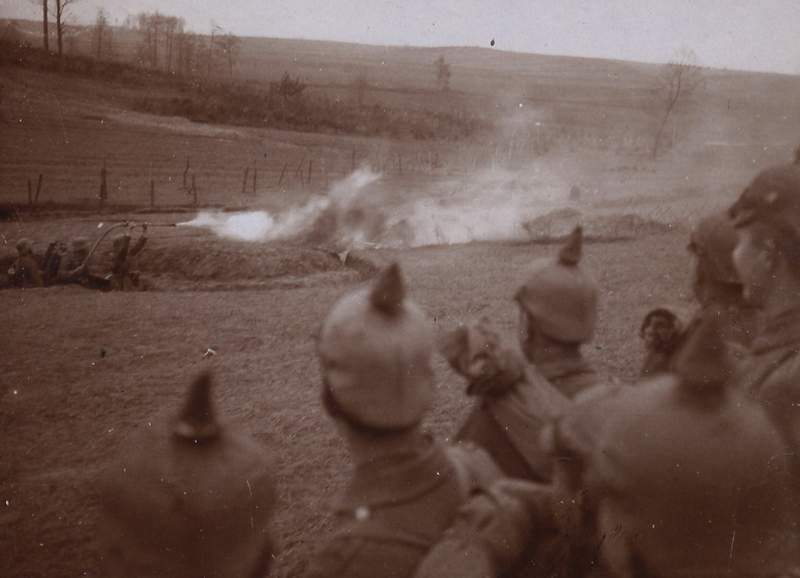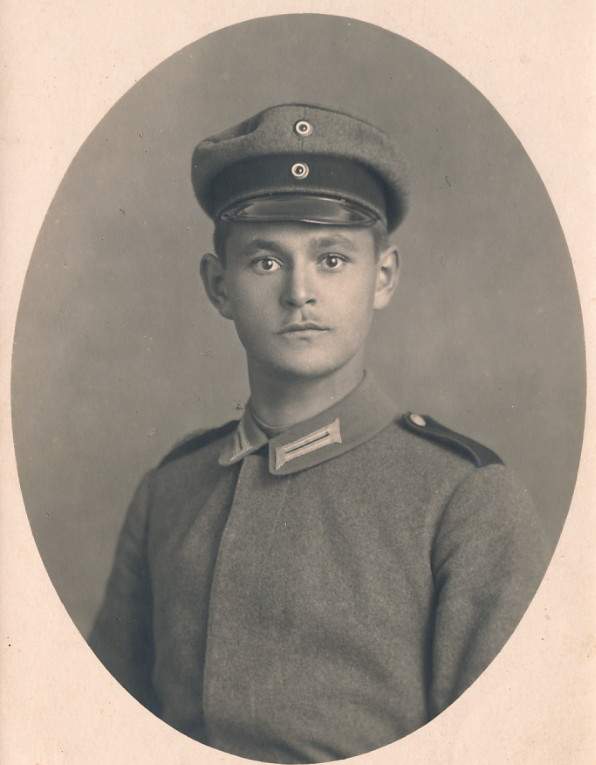Why I’d pay 700 Euro for a postcard
November 4, 2023 by Thomas Wictor
I’ve struck a nerve with my post “Bigotry can cost you a lot,” about how a German postcard seller screwed himself out of hundreds of Euro by refusing to sell to Americans. In that post I said I would’ve paid 700 Euro for the cards. Actually, I would paid that much for just the one card that showed the machine gunners.
Yes, 700 Euro for a postcard. Why? Because I’ve bought tons of hugely valuable cards for a dollar or less each. Here’s a fraction of my dollar-or-less collection.
Pioneer Wolfram Schwarz of the Replacement Company, 3rd Guard Pioneer Battalion, the first German flamethrower unit. The flowers means he’s going off to war. Photos of the 3rd Guard Pioneer Battalion are almost nonexistent.
Unknown company, 3rd Guard Pioneer Battalion. I can identify flamethrower pioneers. Sorry, but I’m not telling how. The writing on the back confirmed what I already knew.
Men of the 14th Company, 3rd Guard Pioneer Battalion. The more mature soldiers would be firefighters. The flamethrower units had the oldest combat personnel, since firefighters were much more physically fit than most men in their age group.
Flamethrower squad and hand-grenade throwers of the 3rd Guard Pioneer Battalion training. Many don’t have cloth covers on their spiked helmets, which is bizarre.
Men of the 2nd Workshop Detachment, Guard Reserve Pioneer Regiment, posing in front of a fire station wearing firefighters’ belts. A little macabre humor, since these flamethrower pioneers are former firefighters who once saved people from fire. The man who sent the card—a Dane named Michaelsen—addressed his daughter as “Your Royal Highness.”
Sapper corporal of the Flamethrower Detachment, Austrian 1st Tyrolean Kaiserjäger Regiment. Austrian flamethrowers often exploded because they leaked, and the primitive igniters allowed the flame to race up the lance, through the hose, and into the oil tank. This man’s entire face is a mask of burn tissue, and he wears a false mustache. There’s no doubt that he was a victim of a faulty flamethrower.
Russian chess master Alexander Fyodorovich Ilyin-Zhenevsky, during his stay in a mental hospital for battle fatigue. He plays chess with his mother on a cloth board. Though he never recovered, he was later assigned to the Flame-Chemical Training Battalion, which trained sappers and infantrymen in the use of flamethrowers and poison gas.
Reservist Augustin Tacherting, Bavarian 1st Reserve Infantry Regiment. He wears a small “H” on his shoulder strap, indicating that he’s a hand-grenade specialist, and he’s obviously just back from a trench raid, since his right trouser leg is soaked in blood, the wound covered in bulky compresses. His face wracked with pain, he still took time out to pose for this post-raid photo.
Flamethrower non-commissioned officer of Assault Battalion No. 5 (Rohr). The rock wall and mountain boots indicate alpine fighting, likely in Romania or Italy. His trousers are heavily protected with leather.
The largest mass-flamethrower attack in history took place at Skrobowa on November 9, 1916. The Germans used 240 flamethrowers. Writing on the backs of these photos indicates that the assault was rehearsed in the nearby town of Gorodische on November 4, 1916. The smiling infantrymen watching the demonstration wear Roman numerals on the side of their helmet covers, indicating the number of their shock troop. These are men of Shock Troop 14.
Gorodische, November 4, 1916. A small-flamethrower squad demonstrates its weapon to infantrymen. Since they have been imported from the western front, the flamethrower pioneers wear the new steel helmet instead of the spiked helmet.
Gorodische, November 4, 1916. A small-flamethrower squad demonstrates how to roll up a trench. Again, the infantrymen seem delighted.
And finally, one of my favorite cards. A flamethrower pioneer of Assault Battalion No. 5 (Rohr), the second-most elite unit of the German army. It suffered horrendously high casualties. This postcard is dated August 5, 1920, indicating that the young man survived. On the back it has the following handwritten message in German:
My little Heart!
At the time of this photo, we had not yet met. My heart did not know that the war would end, and…I would find you.
Your darling.
I hope they had long, happy lives together.

